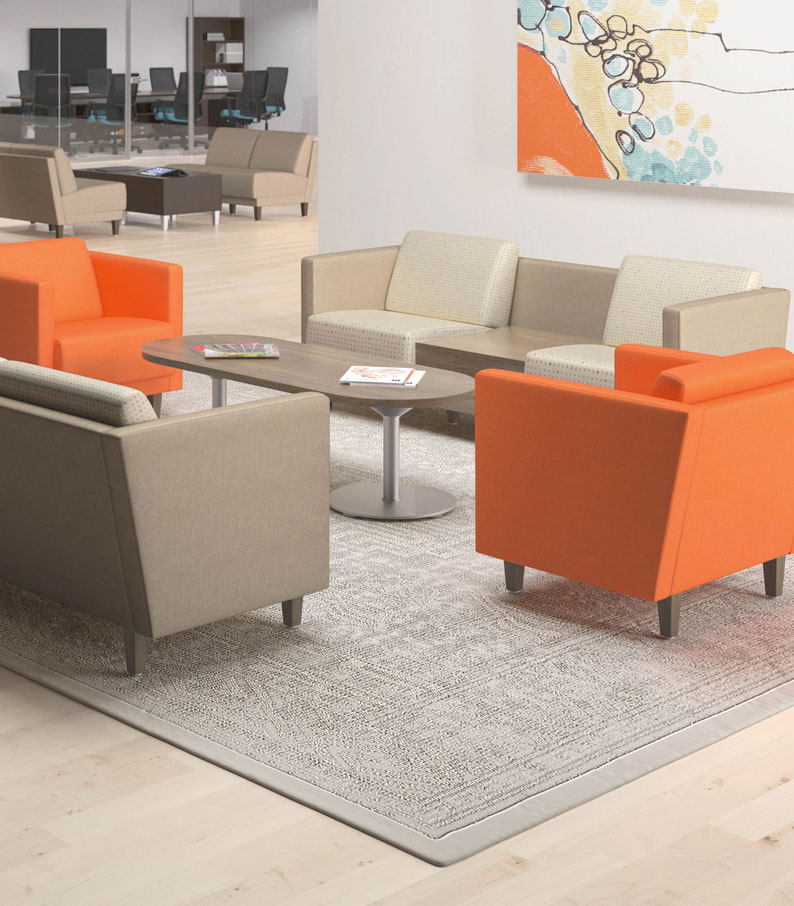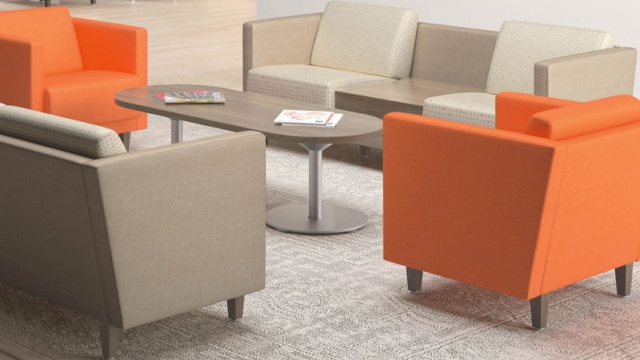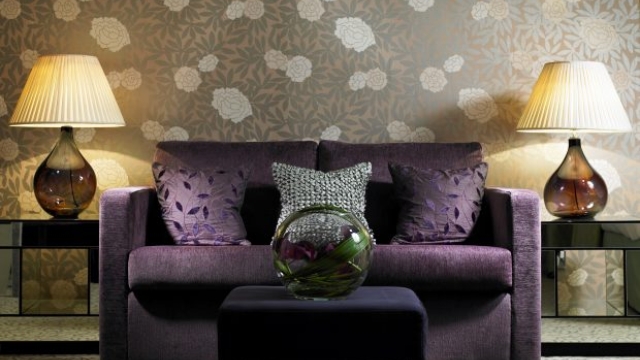The world of healthcare is constantly evolving, pushing boundaries and seeking innovative solutions to enhance patient care. While medical advancements in treatments and equipment often take the center stage, one aspect that should not be overlooked is the design of healthcare furniture. The ergonomics of healthcare furniture plays a vital role in providing comfort and support to patients and healthcare professionals alike.
Gone are the days when healthcare furniture was merely functional, lacking in both style and ergonomic design. In this modern era, where patient-centric care is at the forefront, there is a growing recognition of the impact that furniture design can have on the overall well-being of patients. From hospitals to clinics and even home healthcare settings, the future of healthcare furniture is all about revolutionizing its design to optimize comfort, functionality, and aesthetics.
Healthcare furniture, be it beds, chairs, examination tables, or other pieces, must meet the unique needs and challenges of the healthcare environment. It should effortlessly blend in with the surroundings while offering practical solutions for various activities, such as patient examinations, treatments, and recovery. By focusing on ergonomics, furniture designers can create products that enhance patient mobility, support proper posture, reduce strain on healthcare professionals, and improve overall patient experience.
The future of healthcare furniture lies in finding the perfect balance between form and function. It involves incorporating advanced materials that are both durable and easy to clean, ensuring infection control measures are met. Additionally, the ability to customize furniture to individual patient needs, such as adjustable height or specialized features for different medical conditions, will become increasingly important.
As technology continues to advance at a rapid pace, we can also expect to see the integration of smart features in healthcare furniture. Imagine beds that adjust automatically to individual patient preferences, using sensors to monitor vital signs and adjust positions accordingly. Or chairs that track and encourage proper posture, reminding patients to regularly change positions to prevent pressure ulcers. The possibilities are endless, and innovation in healthcare furniture design is set to revolutionize the way we care for patients.
In conclusion, the future of healthcare ergonomics lies in the transformative design of furniture. By prioritizing comfort, functionality, and aesthetics, healthcare furniture can play a crucial role in enhancing patient care. As technology advances, the integration of smart features will further elevate the potential of healthcare furniture, creating a harmonious blend of form and function. Let us embrace this exciting future, where patients and healthcare professionals will benefit from furniture that truly supports their needs.
Benefits of Ergonomic Furniture in Healthcare
Ergonomic furniture plays a pivotal role in revolutionizing the healthcare industry and improving the overall well-being of both patients and healthcare professionals. By prioritizing comfort and functionality, healthcare furniture can enhance the delivery of care and contribute to a more efficient and productive healthcare environment.
Firstly, ergonomic furniture in healthcare settings helps to reduce the risk of musculoskeletal disorders (MSDs) among healthcare professionals. These disorders are common among those who spend extended periods of time performing repetitive tasks, such as nurses and doctors. By providing adjustable chairs and workstations, healthcare furniture allows for proper posture and support, minimizing the strain on the body and decreasing the likelihood of debilitating MSDs.
Secondly, the integration of ergonomic furniture can greatly enhance patient comfort and recovery. In healthcare facilities, patients often spend significant amounts of time in beds or chairs, especially those with chronic conditions or undergoing long-term treatments. Ergonomic designs ensure that patients have access to comfortable seating options and adjustable beds that can be customized to their specific needs. This not only promotes restfulness but also aids in preventing pressure ulcers and other related complications.
Lastly, ergonomic furniture can contribute to a more efficient workflow within healthcare facilities. Furniture pieces designed with ergonomics in mind can improve accessibility and organization, allowing healthcare professionals to have easy access to essential equipment and supplies. This streamlining of the working environment enables medical staff to deliver care more effectively, minimizing the time spent on searching for resources and maximizing their interactions with patients.
The use of ergonomic furniture in healthcare settings brings about numerous benefits, both for the practitioners and the patients. By promoting physical well-being, enhancing patient comfort, and optimizing workflow, ergonomic furniture serves as a catalyst in the revolution of healthcare design and delivery.
Key Considerations in Designing Healthcare Furniture
When it comes to designing furniture for healthcare settings, there are several key considerations that need to be taken into account. Understanding the unique needs and challenges of healthcare environments is crucial in creating functional and ergonomic furniture solutions that promote both patient comfort and the well-being of healthcare professionals.
-
Durability and Cleanliness:
Healthcare furniture is subjected to constant use and abuse, therefore durability is of utmost importance. It should be able to withstand regular cleaning and disinfection without compromising its functionality or structural integrity. Materials that are easy to clean, resistant to stains, and have antimicrobial properties are preferred to maintain hygiene standards in healthcare settings. -
Patient Comfort and Safety:
The comfort and safety of patients should be at the forefront of furniture design in healthcare facilities. Chairs and beds, for instance, should provide adequate support, promote proper posture, and be easily adjustable to accommodate different patient needs. Additionally, furniture should be designed with rounded edges and without sharp corners to minimize the risk of injury. -
Ergonomics for Healthcare Professionals:
Healthcare professionals spend long hours attending to patients, often performing repetitive tasks that can lead to musculoskeletal issues. Therefore, furniture designed for healthcare settings should prioritize ergonomic features to minimize the strain on healthcare professionals’ bodies. Chairs with proper lumbar support, height-adjustable workstations, and adjustable lighting are just a few examples of how ergonomics can be integrated into healthcare furniture design.
By addressing these key considerations in the design of healthcare furniture, we can contribute to creating a safer, more comfortable, and efficient healthcare environment for both patients and healthcare professionals alike.
Innovations and Trends in Healthcare Furniture Design
The field of healthcare furniture design has been witnessing remarkable innovations and transformative trends, paving the way for a revolution in how healthcare facilities are equipped and optimized for patient well-being. From cutting-edge materials to intuitive designs, let’s explore some of the latest advancements in healthcare furniture that are reshaping the future of the industry.
-
Intelligent Ergonomics: One of the key trends revolutionizing healthcare furniture design is the integration of intelligent ergonomics. Furniture is being engineered to adapt to the unique needs of patients, ensuring utmost comfort and support during their stay. Smart adjustments and intuitive interfaces are being incorporated to cater to individual preferences, promoting better posture and minimizing physical strain. This drive towards intelligent ergonomics is not only enhancing the patient experience but also aiding healthcare professionals in providing optimal care.
-
Sustainable Materials: The shift towards sustainability has extended to healthcare furniture design. With a growing emphasis on eco-conscious practices, designers are exploring the use of sustainable materials that are both durable and environmentally friendly. From bamboo and reclaimed wood to recycled plastics, these materials not only contribute to a healthier planet but also create a calming and healing atmosphere within healthcare spaces.
-
Flexibility and Adaptability: Recognizing the dynamic and evolving nature of healthcare environments, furniture designers are focusing on creating solutions that offer flexibility and adaptability. Modular furniture systems are gaining popularity, allowing for easy reconfiguration based on changing needs and spatial constraints. This enhances the efficiency of healthcare settings, enabling seamless workflows and the ability to accommodate different patient requirements.
In conclusion, the future of healthcare furniture design looks promising, with innovations and trends that prioritize patient comfort, sustainability, and versatility. The integration of intelligent ergonomics, sustainable materials, and flexible designs holds immense potential to transform healthcare facilities into spaces that promote healing, well-being, and improved outcomes for both patients and healthcare providers.






